Biological anthropology laboratory manuals provide a hands-on approach‚ integrating theory with practical exercises. They offer a comprehensive overview of human evolution‚ genetics‚ and forensic techniques‚ enhancing student engagement and understanding through interactive learning.
Overview of Biological Anthropology as a Field
Biological anthropology explores the biological and evolutionary aspects of humankind‚ examining the diversity of human populations and their adaptations to environments. It integrates biology‚ anthropology‚ and other sciences to study human evolution‚ genetics‚ and behavior. By analyzing fossils‚ genetics‚ and living populations‚ biological anthropologists reconstruct the history of our species and understand human variation. This field also delves into forensic anthropology and bioarchaeology‚ applying scientific methods to analyze human remains. Laboratory manuals‚ such as those by K. Elizabeth Soluri‚ provide hands-on exercises to engage students in these topics‚ fostering a deeper understanding of human biology and evolution. These resources emphasize critical thinking and practical skills‚ preparing students for research and real-world applications in biological anthropology. Through its interdisciplinary approach‚ the field continues to address fundamental questions about human origins‚ diversity‚ and adaptation.
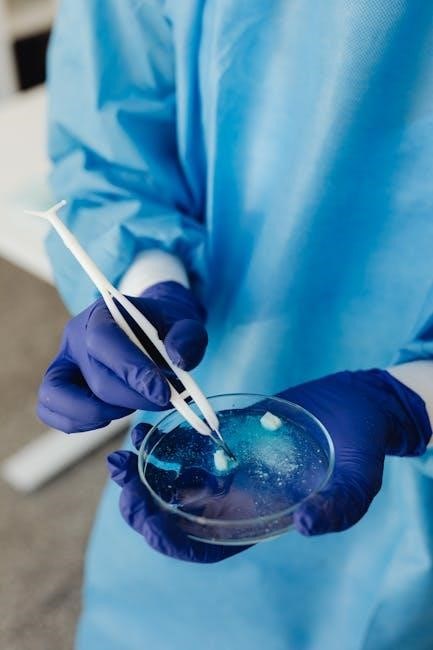
Importance of Laboratory Manuals in Anthropology Education
Laboratory manuals are essential tools in anthropology education‚ offering students a structured and interactive learning experience. These manuals bridge the gap between theoretical concepts and practical application‚ allowing students to engage directly with biological anthropology’s core principles. They provide step-by-step exercises‚ case studies‚ and hands-on activities that enhance understanding of human evolution‚ genetics‚ and forensic techniques. Manuals like K. Elizabeth Soluri’s workbook encourage critical thinking and problem-solving‚ preparing students for real-world research and applications. They also cater to diverse learning styles through visual aids and illustrations‚ making complex topics accessible. By fostering active participation‚ laboratory manuals make biological anthropology more engaging and effective‚ ensuring students develop both theoretical knowledge and practical skills necessary for their academic and professional pursuits in this field.
Structure and Content of a Typical Laboratory Manual
A typical laboratory manual for biological anthropology is designed to provide a comprehensive and organized learning experience. It is usually divided into chapters or modules‚ each focusing on specific topics such as human evolution‚ genetics‚ and forensic anthropology. The manual often begins with foundational concepts‚ progressing to more advanced subjects‚ ensuring a logical flow of knowledge. Practical exercises‚ case studies‚ and hands-on activities are integral components‚ allowing students to apply theoretical concepts to real-world scenarios. Visual aids like illustrations and diagrams are frequently included to enhance understanding. Each chapter may also include objectives‚ materials lists‚ and step-by-step instructions for lab activities. The structure is flexible‚ with some chapters offering specialized focus areas while others provide broader‚ generic explorations. This design ensures that students gain both a theoretical foundation and practical skills‚ making the manual an invaluable resource for mastering biological anthropology.

Key Features of the Laboratory Manual and Workbook
Hands-on exercises‚ integration of theory and practice‚ and visual aids enhance learning. Flexible chapters‚ critical-thinking approaches‚ and interactive activities make the manual engaging and effective for biological anthropology education.
Hands-On Approach to Learning Biological Anthropology
A hands-on approach is central to effective learning in biological anthropology. Laboratory manuals and workbooks provide practical exercises that allow students to apply theoretical concepts to real-world scenarios. Activities such as analyzing fossils‚ measuring skeletal remains‚ and conducting genetic simulations help students engage deeply with the material. This interactive method fosters critical thinking and problem-solving skills‚ essential for understanding human evolution and adaptation. By participating in these exercises‚ students gain a tangible understanding of biological anthropology’s key principles‚ making complex topics more accessible and memorable. The hands-on approach also encourages collaboration‚ as students work together to complete tasks‚ mirroring the collaborative nature of scientific research. This method not only enhances academic performance but also prepares students for future careers in anthropology and related fields. Through practical application‚ students develop a robust foundation in biological anthropology.
Integration of Theory and Practice
Biological anthropology laboratory manuals excel at integrating theory with practical application‚ creating a cohesive learning experience. By combining conceptual knowledge with hands-on activities‚ students can apply theoretical principles to real-world scenarios‚ enhancing their understanding of human evolution‚ genetics‚ and adaptation. For example‚ exercises on fossil analysis or human skeletal remains allow students to observe and interpret biological traits‚ directly linking classroom lectures to laboratory observations. This integration fosters a deeper comprehension of complex topics‚ as students see how theories are applied in scientific practice. The manuals also include case studies that bridge theoretical frameworks with empirical data‚ encouraging critical thinking and analytical skills. This balanced approach ensures that students not only grasp the fundamentals of biological anthropology but also develop the practical skills necessary for conducting research and solving problems in the field.
Visual Aids and Illustrations in the Manual
Visual aids and illustrations play a crucial role in enhancing the learning experience within biological anthropology laboratory manuals. These resources are designed to clarify complex concepts‚ making them more accessible to students. Detailed diagrams‚ charts‚ and photographs are used to illustrate key biological processes‚ such as human evolution‚ skeletal anatomy‚ and genetic variation. For instance‚ 3D reconstructions of fossils and comparative sketches of primate morphology help students visualize evolutionary relationships. Additionally‚ flowcharts and infographics simplify theoretical concepts‚ enabling better retention and understanding. The inclusion of high-quality images of human remains and artifacts provides students with a realistic view of the materials they would encounter in a professional setting. These visual elements are not merely supplementary; they are integral to the manual’s pedagogical approach‚ fostering a deeper engagement with the subject matter and supporting both visual and kinesthetic learners. The result is a more immersive and effective learning experience.
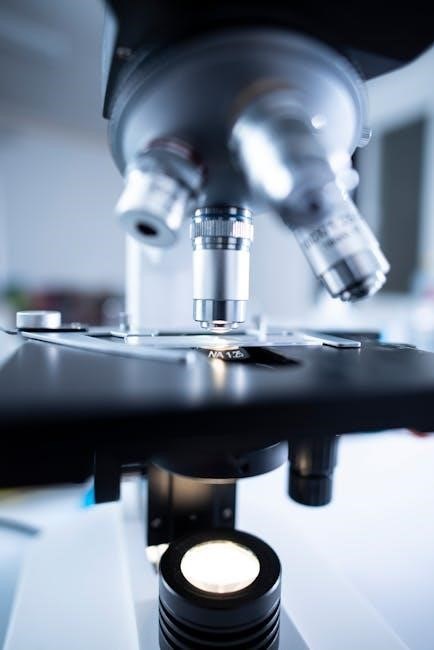
Exercises and Activities in the Workbook
The workbook includes practical exercises‚ case studies‚ and laboratory activities‚ designed to apply theoretical knowledge. Students engage in analyzing human remains‚ understanding evolution‚ and developing forensic anthropology skills through hands-on tasks.
Practical Exercises for Understanding Human Evolution
Practical exercises in the workbook are designed to deepen understanding of human evolution through hands-on activities. These include analyzing fossil records‚ comparing anatomical structures across species‚ and reconstructing evolutionary timelines. Students engage in simulations of evolutionary processes‚ such as natural selection and genetic drift‚ to observe their effects on populations over time. Additionally‚ exercises involve interpreting data from archaeological sites and understanding the significance of key hominin discoveries. Visual aids like diagrams of evolutionary trees and 3D models of fossils are integrated to enhance comprehension. These exercises not only reinforce theoretical concepts but also encourage critical thinking about the complexities of human origins and adaptation. By actively participating in these exercises‚ students gain a more tangible grasp of the dynamic and multifaceted nature of human evolution.
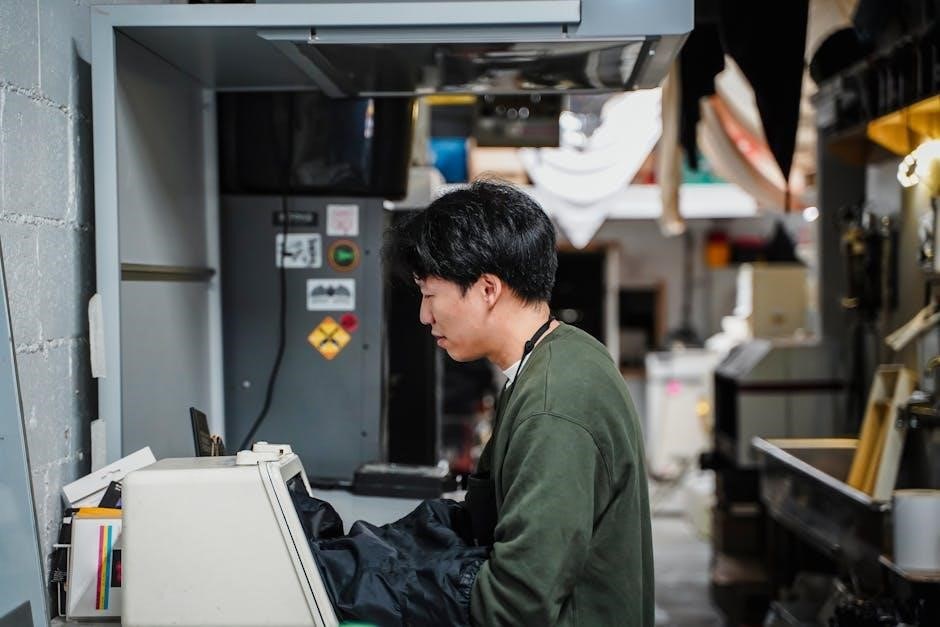
Case Studies in Biological Anthropology
Case studies in biological anthropology provide real-world scenarios for students to analyze and apply theoretical concepts. These exercises often involve examining human remains‚ genetic data‚ or archaeological findings to understand evolutionary processes and biological variation. For example‚ case studies might focus on reconstructing the diet of ancient populations or analyzing skeletal remains to determine cause of death. Students are encouraged to interpret data‚ evaluate evidence‚ and draw conclusions‚ fostering critical thinking and problem-solving skills. These case studies are supported by visual aids‚ such as diagrams and photographs‚ to enhance understanding. By engaging with these practical scenarios‚ students gain hands-on experience in methodologies used by biological anthropologists‚ bridging the gap between theory and application. This approach prepares learners for advanced research and professional practice in the field‚ emphasizing the importance of contextual and interdisciplinary analysis.
Laboratory Activities for Analyzing Human Remains
Laboratory activities focused on analyzing human remains are a cornerstone of biological anthropology education. These exercises provide students with hands-on experience in identifying and interpreting skeletal and fossil evidence. Activities often include measuring skeletal dimensions‚ assessing bone density‚ and reconstructing ancient diets. Students learn to apply forensic anthropology techniques‚ such as determining age‚ sex‚ and cause of death from remains. These labs also emphasize the importance of understanding human variation and adaptation through direct observation of anatomical features; Visual aids‚ such as detailed diagrams and photographs‚ accompany these exercises to enhance comprehension. By engaging with real or replica human remains‚ students develop practical skills essential for careers in anthropology‚ archaeology‚ and forensic science. These activities bridge theoretical knowledge with practical application‚ preparing learners for advanced research and professional practice in the field. They also highlight the ethical considerations of working with human remains‚ fostering a respectful and scientific approach.

Advanced Topics in Biological Anthropology
Advanced topics explore specialized areas like genetics‚ evolution‚ and forensic anthropology. These subjects integrate scientific inquiry with theoretical frameworks‚ offering deeper insights into human biology and evolutionary processes through laboratory investigations.

Genetics and Evolution in Anthropology
Genetics and evolution form the cornerstone of biological anthropology‚ exploring how genetic variation shapes human diversity and adaptation. Laboratory manuals emphasize the role of evolutionary principles in understanding human biology‚ tracing ancestry‚ and analyzing population dynamics. Practical exercises often involve analyzing genetic data‚ such as mitochondrial DNA and Y-chromosome studies‚ to reconstruct evolutionary histories. These activities help students grasp how genetic changes influence traits like skin color‚ lactose tolerance‚ and disease resistance. Additionally‚ the integration of evolutionary theory with modern genetic tools provides insights into human migration patterns and adaptation to environmental pressures. By combining theoretical concepts with hands-on analysis‚ students gain a deeper understanding of how genetics and evolution have shaped the human species over time. Such approaches prepare future anthropologists to address complex questions about human origins and biological variation.
Forensic Anthropology Techniques
Forensic anthropology techniques are essential for analyzing human remains in legal and investigative contexts. Laboratory manuals provide detailed exercises for estimating age‚ sex‚ ancestry‚ and stature from skeletal remains. Students learn to identify trauma‚ pathology‚ and taphonomic changes‚ crucial for reconstructing cause of death and post-mortem events. Practical activities include osteometric analysis‚ cranial reconstruction‚ and trauma assessment. These exercises bridge theoretical knowledge with real-world applications‚ preparing students for casework. Advanced topics cover DNA analysis and 3D scanning‚ reflecting modern advancements in the field. By mastering these techniques‚ future forensic anthropologists gain the skills to contribute to criminal investigations and humanitarian efforts‚ such as identifying missing persons or victims of mass disasters. These hands-on approaches ensure a comprehensive understanding of forensic methods‚ emphasizing their role in solving complex legal and historical questions.
Biological Variation and Adaptation
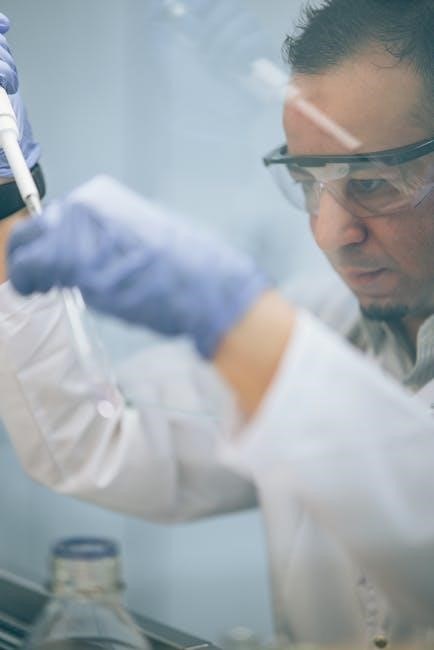
Biological variation and adaptation are central to understanding human diversity and evolutionary processes. Laboratory manuals explore how genetic and environmental factors shape human traits‚ such as skeletal morphology‚ skin color‚ and body size. Practical exercises involve analyzing human populations to identify adaptive responses to climates‚ diets‚ and diseases. Students learn to measure and interpret morphological variation‚ linking it to ecological and evolutionary contexts. These activities emphasize the dynamic nature of human biology‚ highlighting how populations adapt to survive in diverse environments. By examining case studies‚ such as high-altitude adaptations or lactose tolerance‚ students gain insights into the mechanisms driving human variation. These exercises foster a deeper appreciation for the complexity of human biology and its resilience in the face of environmental challenges. Understanding biological variation and adaptation is essential for addressing broader anthropological questions about human origins and population dynamics.
Laboratory manuals and workbooks remain vital in biological anthropology education‚ bridging theory and practice. Future innovations may include digital tools and virtual labs‚ enhancing interactive learning and adapting to modern educational needs.
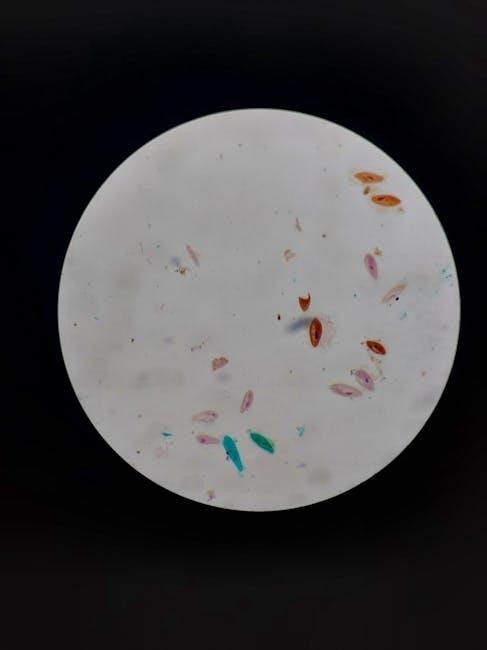
The Role of Laboratory Manuals in Modern Anthropology
Laboratory manuals play a crucial role in modern anthropology education‚ serving as essential tools for bridging theoretical concepts with practical applications. They provide structured‚ hands-on exercises that enable students to explore biological anthropology through active learning. By integrating visual aids‚ case studies‚ and interactive activities‚ these manuals enhance comprehension of complex topics like human evolution and forensic techniques. Their comprehensive approach ensures learners gain practical skills‚ such as analyzing human remains and understanding genetic variations. Additionally‚ laboratory manuals adapt to evolving educational trends‚ incorporating digital innovations to cater to diverse learning styles. They are indispensable resources for both students and researchers‚ fostering a deeper understanding of humanity’s evolutionary history and biological diversity. As anthropology continues to advance‚ laboratory manuals remain vital for preparing the next generation of scholars and practitioners in this dynamic field.

Future Innovations in Biological Anthropology Education
Future innovations in biological anthropology education are expected to revolutionize how students engage with the field. Advances in digital technology will likely integrate virtual reality and augmented reality into laboratory manuals‚ offering immersive experiences for exploring human evolution and anatomy. Interactive 3D models could replace traditional diagrams‚ allowing students to examine fossils and skeletal structures in unprecedented detail. Artificial intelligence may also play a role‚ providing personalized learning paths and real-time feedback on assignments. Additionally‚ online platforms could enhance collaboration‚ enabling global teamwork on case studies and research projects. These innovations will make education more accessible and engaging‚ preparing students for cutting-edge research and practical applications in fields like forensic anthropology. By embracing these technologies‚ biological anthropology education will remain dynamic and relevant‚ equipping future professionals with the tools needed to address emerging challenges in the discipline;